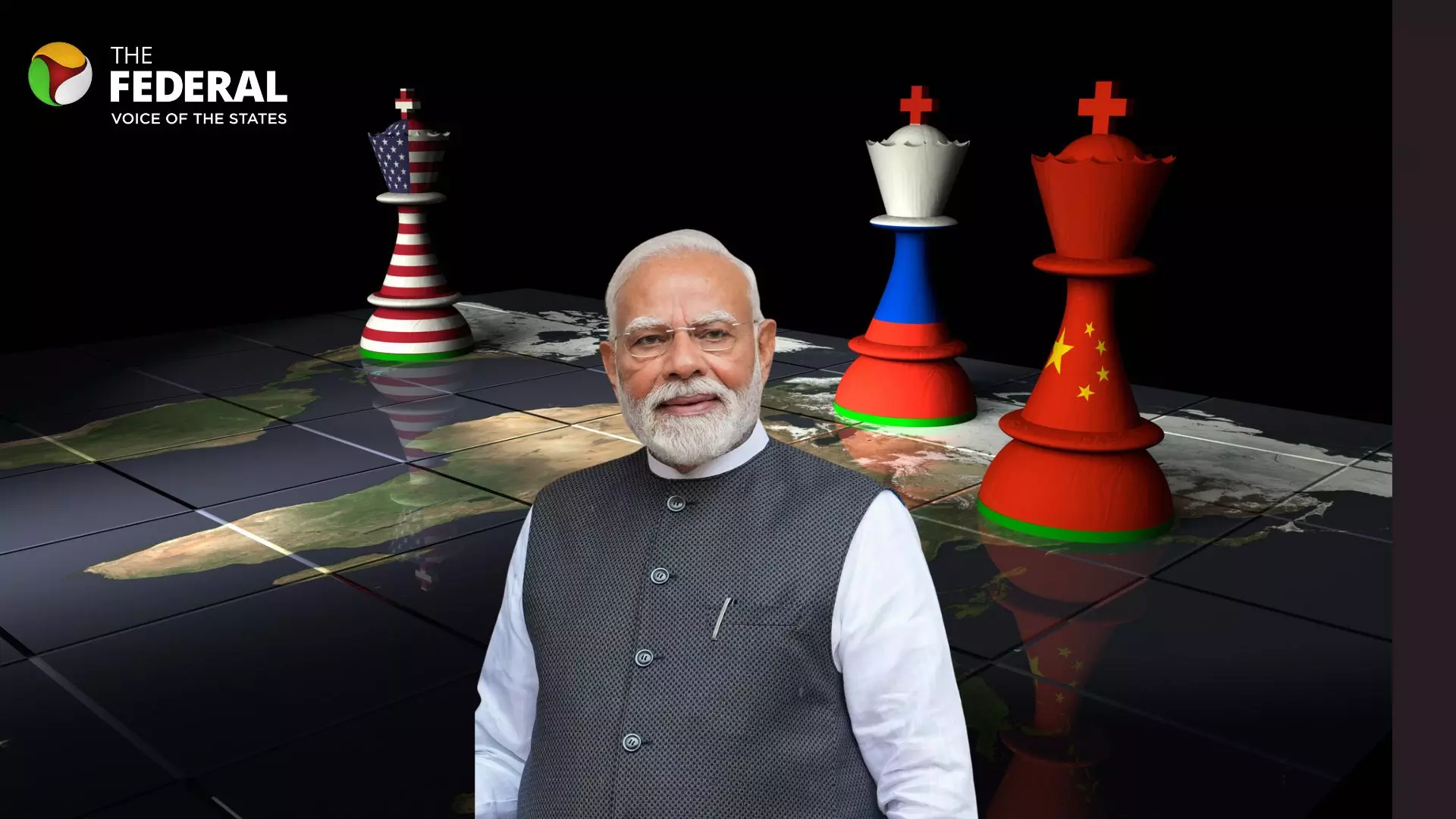
Can Modi balance US tariffs, Russia-China ties? Expert explains
Modi faces Trump’s tariffs, SCO diplomacy with Xi and Putin, and outreach to Japan. Can India balance it all? Sridhar Krishnaswamy shares his thoughts

India’s foreign policy faces a stress test. Prime Minister Narendra Modi’s Japan visit, followed immediately by the Shanghai Cooperation Organisation summit alongside Xi Jinping and Vladimir Putin, frames a high-stakes week.
With US tariffs biting and global alignments shifting, can New Delhi protect economic interests while preserving key partnerships? The Federal in conversation with senior journalist Sridhar Krishnaswamy.
Why did the Prime Minister prioritise Japan before the SCO, especially amid the US tariff war?
This was a scheduled annual summit India and Japan have held for over a decade, but the timing is consequential. Japan—traditionally a close US ally—has also been hit hard by Washington’s tariff actions. India, meanwhile, faces a double blow: a 25% tariff on goods and another 25% framed as sanctions linked to Russian oil purchases, which can push the effective burden above 50% and even past 60% on some products. Against this backdrop, Tokyo offers a practical agenda beyond routine “technology and people-to-people” talk: batteries, robotics, semiconductors, shipbuilding, nuclear energy and biofuels. Japan has signalled a plan to double private-sector investment in India to roughly $70 billion—an expression of confidence in India’s economic trajectory. All told, it’s a strong platform as Modi heads to Tianjin for the SCO.
Sitting with Xi and Putin at the SCO while deepening defence ties with the US sends mixed signals. What message goes to Washington?
India should have quietly telegraphed trade-offs earlier: if squeezed by tariffs and sanctions, India would reassess defence sourcing. Beyond Apaches and Chinooks already in the pipeline, New Delhi has major fighter decisions ahead—where once an F-35 conversation existed, pressure could nudge interest toward Russia’s Su-57. Similarly, civil aviation and nuclear plans could affect Boeing, General Electric and Westinghouse. The point is classic Tip O’Neill—“all politics is local”: if big US primes feel the pinch, Washington notices.
How are sanctions and tariffs reshaping India’s economic and diplomatic space?
Short term, exporters from Jaipur to Tiruppur are hurting across garments, gems and jewellery and more. India must scramble for additional markets and work with partners to soften the blow. Long term, this is an opportunity for structural reform in the import–export ecosystem, not mere tinkering with GST rates or tax slabs. The goal: build resilience to future shocks.
Are there double standards in how Washington treats India, China and Russia?
There are several asymmetries. China reportedly imports more than 60% of its oil needs from Russia, while India is at about 35%—up from roughly 2% before the Ukraine war, which Washington cites to accuse India of “bankrolling” Moscow. Yet, the US and Europe once urged India to buy Russian crude to stabilise prices. Beyond oil, the US depends heavily on China for rare earths—China controls about 80% of that market—so Washington is careful; sectoral understandings with Beijing have emerged instead of blanket tariffs. Vladimir Putin’s claim that US-Russia trade has risen about 20% since President Trump took office, and reports of US-Russia talks on oil and energy—contrasting with penalties on India.
With US tariffs on one side and closer coordination with Russia and China on the other, what choices does India have without damaging core partnerships?
There can be no abrupt shifts in foreign policy. A 25-year India–US strategic build-up cannot be rolled back to the 1990s and rebuilt overnight. India must continue tightrope walking: keep Japan central within a possible Quad recalibration if a future US administration drifts; prepare contingency mechanisms where the other three Quad members step up if needed. Economically, India must “bite the bullet,” absorb near-term pain, and focus on reforms. Complaining won’t remove tariffs; planning will. The task is to manage the squeeze and convert it into a chance to look ahead.
The content above has been transcribed from video using a fine-tuned AI model. To ensure accuracy, quality, and editorial integrity, we employ a Human-In-The-Loop (HITL) process. While AI assists in creating the initial draft, our experienced editorial team carefully reviews, edits, and refines the content before publication. At The Federal, we combine the efficiency of AI with the expertise of human editors to deliver reliable and insightful journalism.

